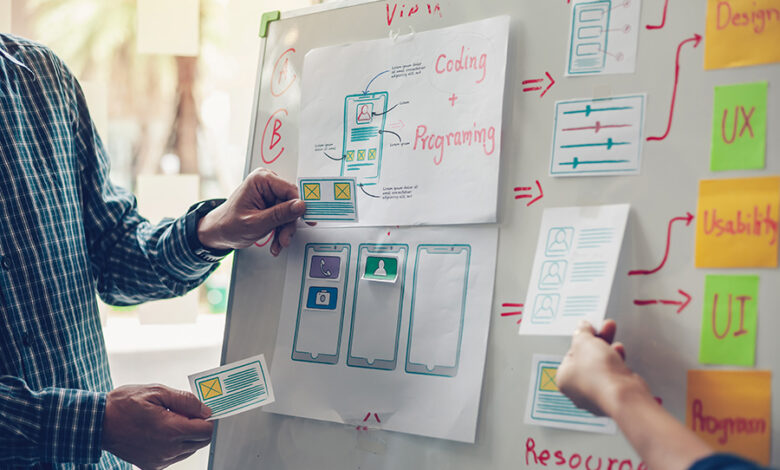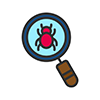Mobile App Development Lifecycle

Introduction to the Mobile App Development Lifecycle
Understanding Mobile App Development Lifecycles can help you develop better apps. Mobile app development requires both creative and analytical skills. The process can be expensive and time-consuming. So it is important to follow industry best practices. Even with resource constraints, you can produce great results with best practices in place.
Here are the well-known steps in mobile development:
- Designing a Mobile App
- Developing a Mobile App
- Testing a Mobile App
- Distribution and Release of a Mobile App
- Maintenance of a Mobile App
Steps in Mobile App Development Lifecycle
Step 1: Design
 Designing a mobile application requires an understanding of the targeted customers. In this stage, development teams brainstorm ideas, develop mockups and design the software architecture.
Designing a mobile application requires an understanding of the targeted customers. In this stage, development teams brainstorm ideas, develop mockups and design the software architecture.
The primary focus is on the User Experience (UX) and the User Interface (UI) design. This is the front-end of the application. Developers also look into back-end issues like data storage and resource allocation. Without a robust back-end, applications will be unreliable and bug-prone.
Teams go through multiple designs during this phase and come up with a set of features to implement.
Step 2: Development
In this stage, software developers start writing code and implementing features.
Teams can choose to use different workflows. Waterfall, iterative, and agile are well-known models. These models help produce better quality software. Generally, mobile teams prefer agile development due to its ability to produce rapid results.
Development teams also have to deal with the intricacies of different platforms. Apple, Android, and Windows have their own Software Development Kits (SDKs). There are also third-party integration SDKs available to target multiple platforms. However, there might be performance penalties for hybrid development. Teams select the development technology based on the application requirements.
Step 3. Testing or Quality Assurance (QA)
 Due to the staggering number of mobile devices, mobile testing is challenging. Also, platforms like Apple and Android have their own testing criteria. For online store distribution approval, mobile software applications have to meet those standards.
Due to the staggering number of mobile devices, mobile testing is challenging. Also, platforms like Apple and Android have their own testing criteria. For online store distribution approval, mobile software applications have to meet those standards.
However, reputable companies go beyond those minimum requirements. A buggy application can result in bad reviews which can turn into bad sales. So larger companies have dedicated QA teams who rigorously test applications. Smaller companies use third-party QA services.
During the testing process, QA approves various iterations of the software. Prototype, alpha, beta, and release candidate stages are common. Generally, there is a feedback loop between the development team and the QA team. Only release candidates are sent out for distribution.
Step 4. Distribution and Release
Each platform has its own distribution store. Apple Store and Google Play are some of the well-known distribution channels. Developers need to follow the distribution guidelines to submit an app to the store.
For example, Apple requires an app to be signed with Apple’s own security certificate. For Android, developers can use a generic SSL certificate.
Distribution channels test for compliance before approval. Rejected apps need to be fixed before resubmission. Once approved, the application is released and it becomes available for the consumers.
Step 5. Maintenance
 First-time developers often forget to consider the maintenance cost of a software. Platform environments are always changing. As a result, developers have to keep updating their software to fix new bugs during the lifecycle of the app. If the maintenance cost becomes too high, developers can retire the application.
First-time developers often forget to consider the maintenance cost of a software. Platform environments are always changing. As a result, developers have to keep updating their software to fix new bugs during the lifecycle of the app. If the maintenance cost becomes too high, developers can retire the application.
Mobile App Development Lifecycle – Conclusion
Software Development Lifecycle (SDLC) is a large field of study. This article gives you a bird’s eye view of the process for mobile development.
Mobile App Development Lifecycle – Additional Resources
- Android Developers Portal – The latest on tools that help you build the highest quality Android apps for every Android device.
- Apple Developer Program – Join the Apple Developer Program to reach customers around the world on the App Store for iPhone, iPad, Mac, Apple Watch, and Apple TV.
